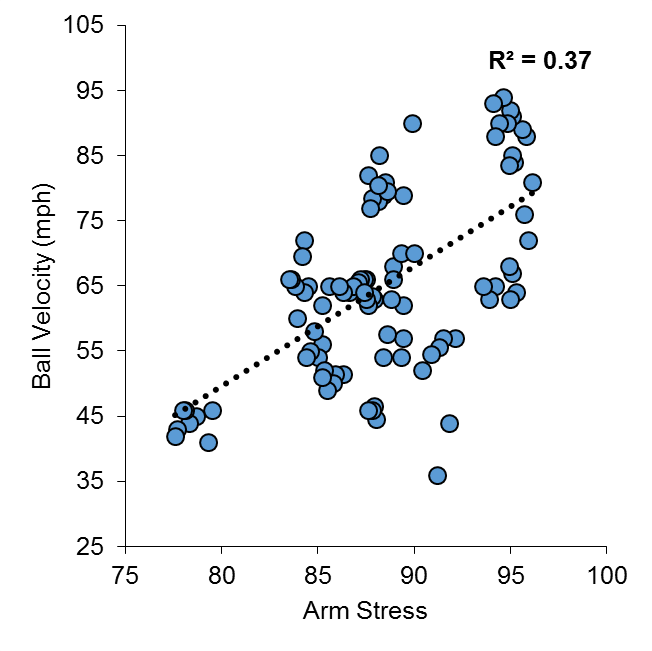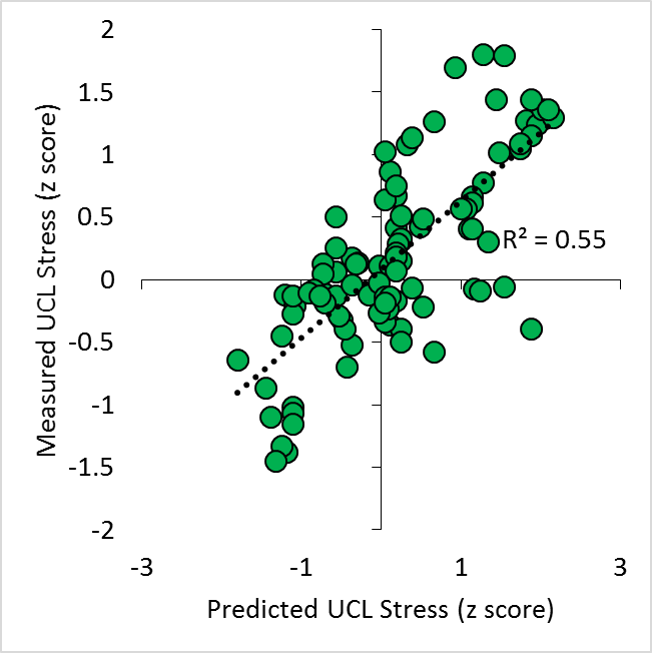A lot was made of the heavy workloads that elite relievers performed in the 2016 post season. Aroldis Chapman, Andrew Miller, and Roberto Osuna had extended appearances of 2+ innings, when they had only thrown an inning at a time in the regular season. With everything on the line, teams were willing to push these elite arms to their limits. For the most part (save for one scary moment in the AL Wild Card game with Osuna), they all emerged unscathed, and probably went a long way to raising reliever salaries for future seasons.
By now, you have probably learned that my Fatigue Unit metric heavily favours relief pitchers. A study by Whiteside and colleagues (2016) 1, and my analysis of Driveline’s publically available data 2,3, have indicated that throwing on consecutive days, and throwing harder, are risk factors for Ulnar Collateral Ligament reconstruction. Relief pitchers are throwing more and more innings, and their rate of injury appears to be much greater than those of starting pitchers 4. These are the hard facts of relief pitching – see examples from Aaron Sanchez (94-95 mph as a starter, and 97-100 as a reliever).

Relief Innings pitched, and number of relief pitchers used through the 1965 to 2015 season (Keri & Neil, 2014). Relief pitchers are throwing more and more innings – and pitching in the bullpen may not be saving arms.
Using Fatigue Units5, I wanted to look at the top workloads in the past post season, and furthermore, explore how those workloads compared to regular season workloads.
Methods
I was able to analyze the 2016 MLB regular season thanks to Michael Copeland (@jelloslinger). He pulled in pitch counts, by inning and game, for every game since the start of the 2015 season. For simplicity’s sake, I looked at the peak velocity and the average pace for all pitchers, downloaded from the Fangraphs website. Those were the data required to calculate FU’s for each pitcher. I then broke these data down by regular season games and post-season games.
Once cumulative fatigue units were calculated for each pitcher, I also calculated the average workload per game. The rest of the analysis was performed on pitchers who only pitched in both the regular season and the post season. I compared the average workload between regular season and post season performances. For an example, I also looked at how workloads changed throughout the season, and I’m going to present the data on how workloads changed throughout course of the season for a few select pitchers.
Results and Conclusions
Not surprisingly, the highest workload of the 2016 playoff season belonged to Andrew Miller and Corey Kluber. For Andrew Miller, the biggest change in his workload between the regular season and the post season, was his multi-inning appearances. In the playoffs, he averaged 0.8 FU’s per game, and in the regular season, he average 0.4 FU’s per game. His workload per game was doubled in the playoffs when compared to his regular season numbers. Andrew Miller’s playoff workload represented 25.2% of his entire regular season workload – during 10 games (compared to 70 games in the regular season).
As for Corey Kluber, his high workload was driven by short rest. Kluber pitched game 1, 4 and 7 of the World Series in 2016. In the regular season, Kluber pitched 100% of his starts on regular rest (a 5 day separation, minimum, between starts). During the playoffs, 50% of his appearances came on less than 5 days of rest. Kluber averaged 1.23 FU’s per appearance in the 2016 playoffs, compared to 0.74 FU’s per appearance in the regular season.
Going to game 7 of the World Series, the Cubs had the greatest sum of fatigue units of all 2016 playoff teams. However, when looking at sum of fatigue units for every playoff teams, the Cubs accumulated 147% more fatigue units than the second highest team (the Toronto Blue Jays). When looking further into these findings – what drove these really high FU accumulations in the Cubs and Blue Jays, were a very high number of back to back relief appearances for both teams. The Cubs had 35% of all of their pitching appearances in the post season occur on back to back nights, a total of 26 pitcher appearances in the 2016 post season. Comparatively, Cleveland only had 11% of all of their pitching appearances occur on back to back nights.
I’m not one for hot takes, but I feel that I have to say something here. If workload has any sort of relationship to injury, Terry Francona’s management of his pitching staff, from a workload management perspective, is one of the most impressive baseball strategy events to occur in my recent memory. While the Cubs emerged the eventual World Series Champions, Joe Maddon had to repeatedly rely on the same pitchers (primarily, Aroldis Chapman) in high leverage situations, which lead to high usage during back to back games. If extreme workloads to lead to injury, the work done by Francona in the playoffs does appear to be a great template for managers in the future. If we’re being realistic though – flags fly forever, and when they haven’t flown in 108 years, it’s hard to say that there were any errors in workload management.
I still have to look further into the utility of FU’s as an injury prediction model. Currently, I believe it is a metric that more accurately represents physiological demands on the body, and more importantly, the musculature responsible for predicting the UCL.


Recent Comments